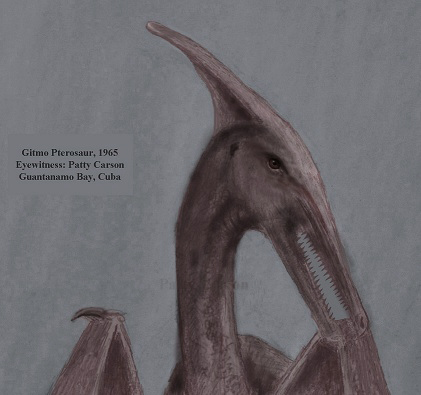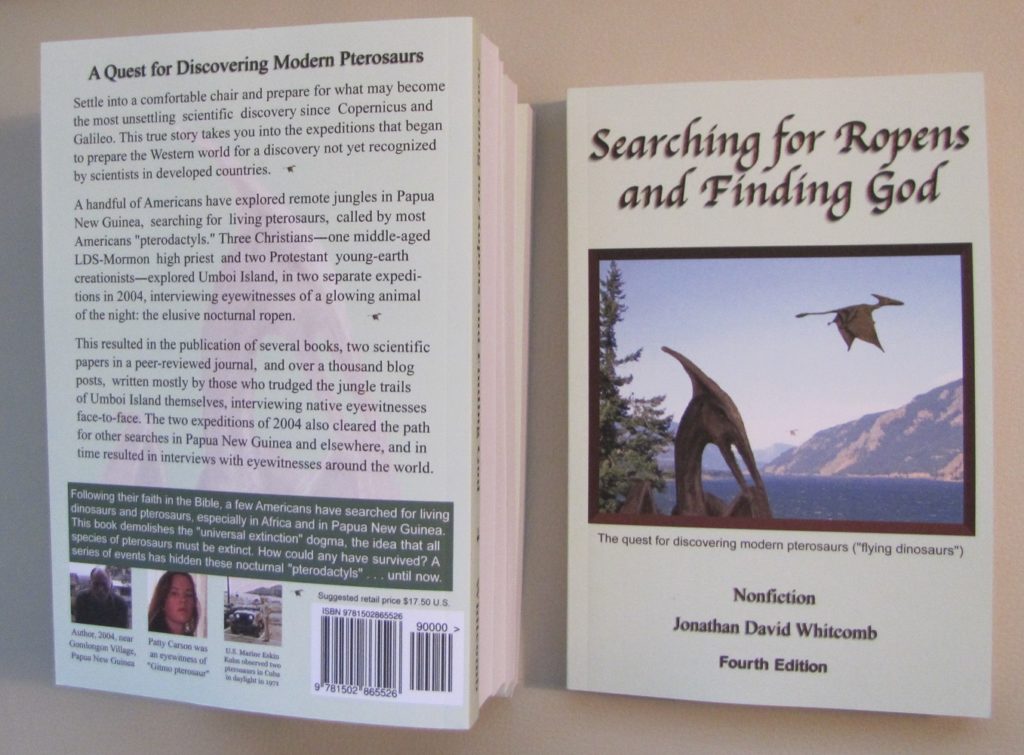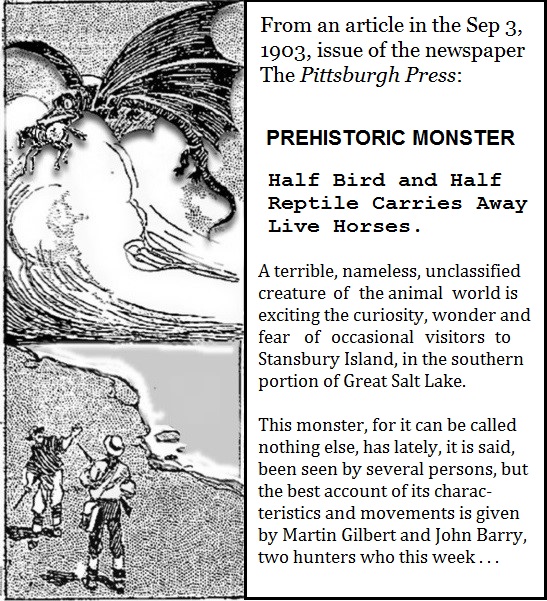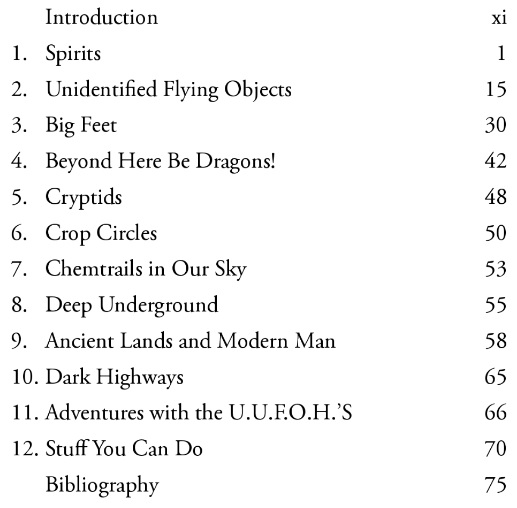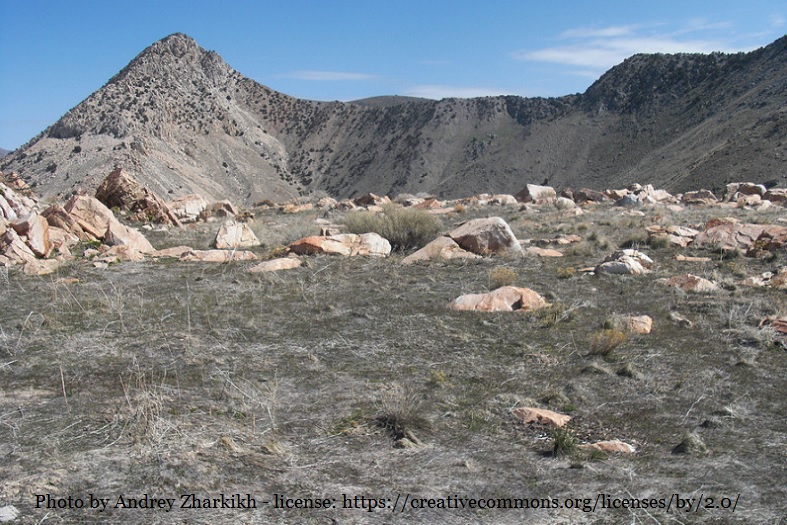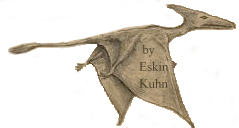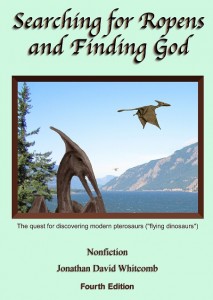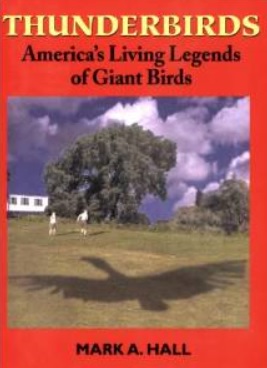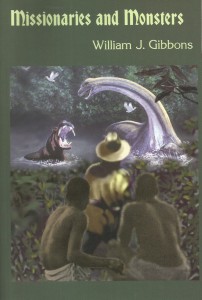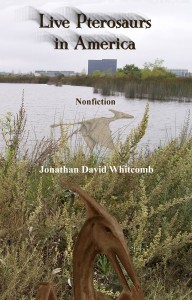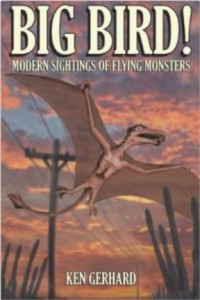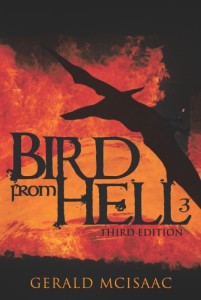One little post cannot do justice to all the cryptozoological evidence for the bioluminescence of at least some species of pterosaur that still live on this wonderful planet of life. Non-extinct glow-in-the-dark pterodactyls? With too much evidence to fit into one blog post? And am I, Jonathan Whitcomb, declaring that more than one species of pterosaur is now living? Precisely.
If we had space here, we could get into how we know this bioluminescence is intrinsic (rather than a glow beyond the control of the animal possessing it). Ropen bioluminescence is under at least some control, and the large flying creature that glows as it flies over Umboi Island, in Papua New Guinea, appears to decide when to turn on that glow. It lasts for only a few seconds and appears, in this particular species, to never vary in that length of a flash: five to six seconds.
Since we have room for only an introduction, we’ll begin with the ropen of the southwest Pacific. We’ll then touch on three related subjects:
- Marfa Lights
- “Fire-breathing” dragons
- Fiery flying serpent (Bible)
Ropen of Papua New Guinea
The following is a videotaped interview I had with an old man in Opai Village, Umboi Island, Papua New Guinea, in 2004, during my expedition on that tropical island:
Michael, a native of Opai Village, tells Whitcomb about a grave robbery
From this testimony, it seems that a large bioluminescent scavenger lives on Umboi Island. Yet by itself this interview I had with this old native does not appear sufficient to convince many Western skeptics that the ropen is a gigantic bioluminescent pterosaur. After all, Michael did not see any wings on the animal but only a light associated with a grave robbery. We need to dig deeper.
I led the first of the two Umboi Island ropen expeditions of 2004. The majority of the natives I interviewed had seen only a flying light, not any form or features of the ropen. So why think that the flying light seen over this tropical island on some nights is a modern pterosaur? It’s not just the traditions about this flying creature. Some islanders have seen the shape and features of this animal.
A few eyewitnesses have seen the ropen at a closer range, including four natives whom I interviewed a few days before I finished my expedition on Umboi Island. I was delighted to return to the mainland of Papua New Guinea with videotaped interviews of three islanders who had seen the ropen clearly in daylight. I had no doubt that it was a large living pterosaur.
So what is the connection between a flying creature that appears to be, in daylight, a pterosaur and a flying light after sunset? A few eyewitnesses have seen both the glow and the pterosaur shape. Let’s consider the testimonies of two Umboi Island eyewitnesses: Jonah Jim and Jonathan Ragu.
Both of these men had witnessed a flying ropen, although the sightings were in different years (2001 and 2004) and in different parts of Umboi Island. Both Jonah Jim and Jonathan Ragu chose the Sordes pilosus when given a choice of dozens of silhouettes of birds, bats, and pterosaurs to choose from. Both men saw the shape and features of the ropen and also a glow coming from the animal’s body. These two sightings connect the flying light with an apparent pterosaur.
Marfa Lights in Texas
Not all mysterious lights appearing near Marfa, Texas, are car headlights on a highway. A few times each year the strangest lights appear, although they stay for only about one or two nights at a time. Why do they not generally appear for three or more nights in a row? After all, they keep coming back every few weeks throughout the year. They behave in a way strongly suggesting they are a group of bioluminescent flying predators and intelligent ones at that.
They hunt whatever they hunt in an area of desert at night for a night or two and then move on to another area of Texas or south to Mexico. The evidence is circumstantial—I’ve never heard of anyone catching one of the creatures—but nevertheless it is broad and deep, this circumstantial evidence.
By the way, many of the sightings of living pterosaurs in the United States are in Texas, and a small portion of those reports include descriptions of a glow coming from the flying creatures.
Fire-Breathing Dragons
Those cryptozoologists who have long studied eyewitness accounts of living pterosaurs—they generally believe that some of the old legends of fire-breathing dragons come from, or are inspired by, sightings of large bioluminescent pterosaurs in early human history.
Fiery Flying Serpent
We also believe that Old Testament references to fiery flying serpents are accounts of human interaction (however unpleasant) with long-tailed (Rhamphorhynchoid) pterosaurs that are bioluminescent.
.
The “Gitmo pterosaur” of eastern Cuba (sketch by an eyewitness)
###
.
Glowing pterosaurs may attack farm animals
At around 10:30-11:30 p.m., the nearby farm animals became greatly disturbed, making alarming sounds, as if they were in danger. . . . That was about the time that 12-year-old Dallin Roberts saw something very strange in the sky. . . . He soon realized that it was a flying creature. Two things struck him as very odd, however: the enormous size and the glowing body of the flying animal.
Modern pterosaurs and the ropen
I, Jonathan Whitcomb, have received reports directly from eyewitnesses who report encountering living pterosaurs on five continents . . .
The Fiery Flying Serpent of the Bible may have been a long-tailed Rhamphorhynchoid [a “basal” pterosaur], related to the modern-day ropen.
Bioluminescent flying predators in Texas
“Reports of unusual lights east of Marfa extend back to the 1800s. . . . the author finds that while most of the observed lights in this area can be explained, about 3 percent are truly mysterious and of unknown origin.”
A number of the sightings suggest bioluminescence. I really did not expect that. Glow in the dark pterosaurs in the USA? It just gets weirder.
.
____________________________________________________________________
Advertisement
Please support this investigation by purchasing your own copy of the nonfiction cryptozoology book Searching for Ropens and Finding God (fourth edition). Thank you.
.



